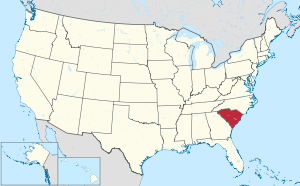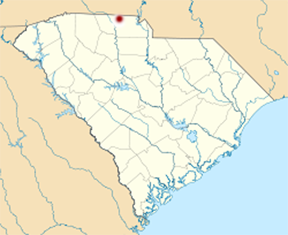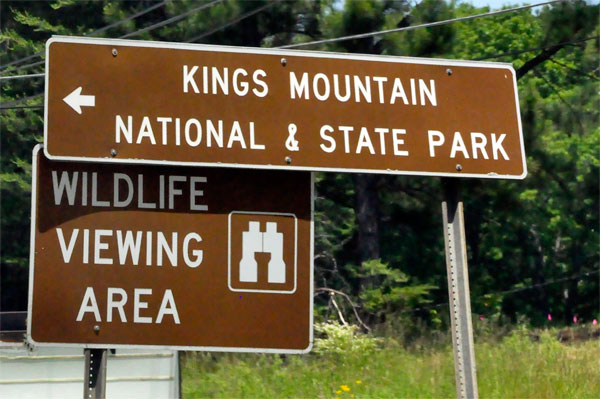 |
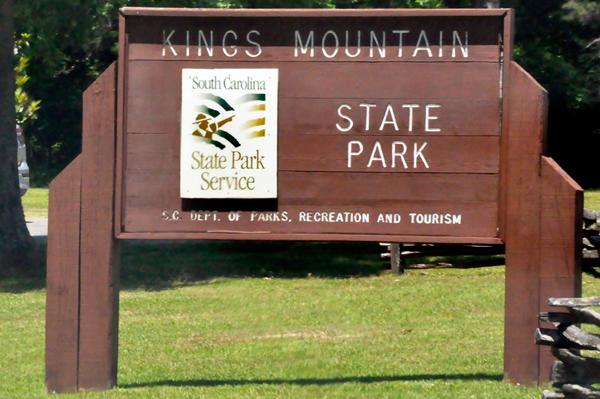 |
The trail at the State Park was not a loop, and it was uneven, rocky and full of horse poop, so the two RV Gypsies did not hike very far on this trail. |
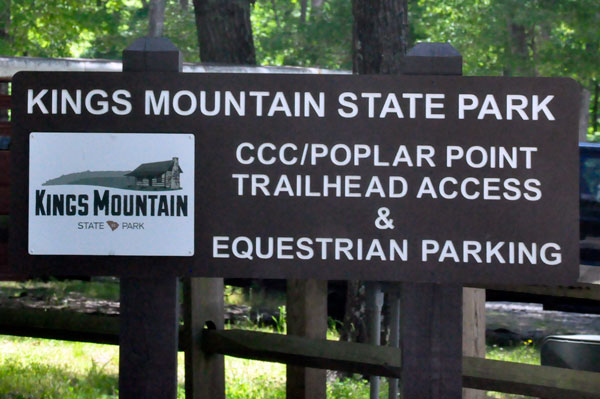
|
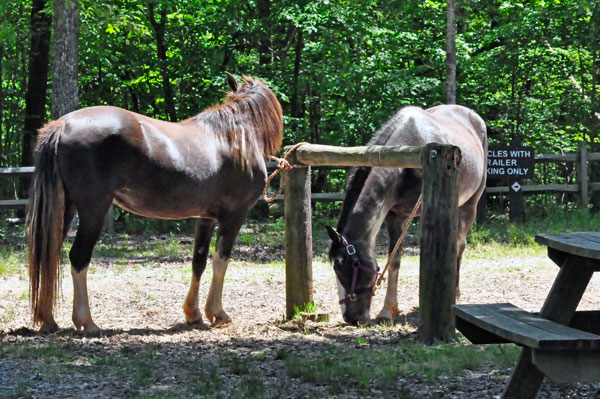 |
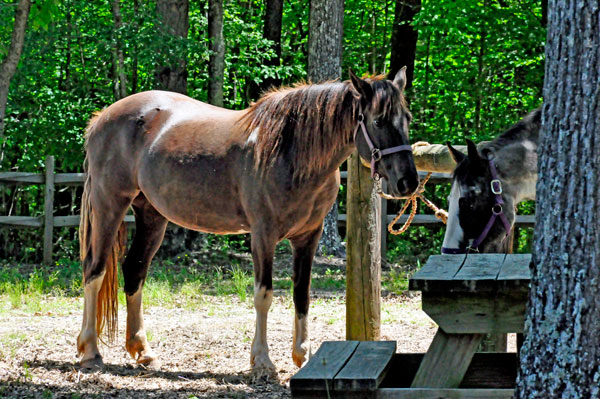 |
|
Then the two RV Gypsies drove a few miles to Kings Mountain National Military Park, along the NC/SC border. The park commemorates the Battle of Kings Mountain, a pivotal and significant victory by American Patriots over American Loyalists during the Southern Campaign of the Revolutionary War. It was listed on the National Register of Historic Places in 1996.Thomas Jefferson considered the battle The turn of the tide of success.
|
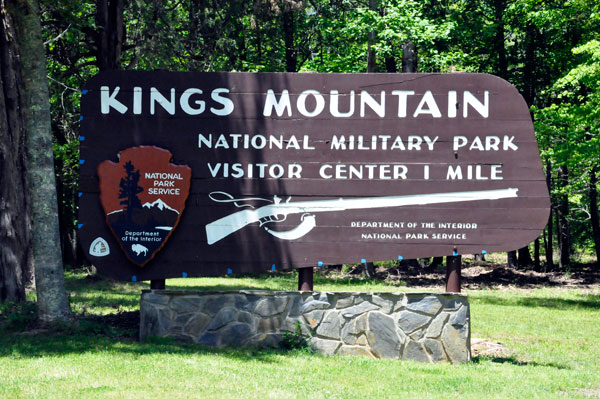 |
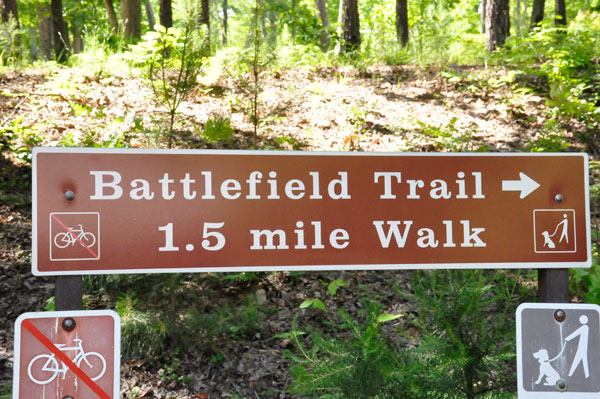 |
This was a nicely paved trail. However,
it had a lot of steep up and down hills. Lee Duquette thought there
would not be a lot to photograph, but this is a very important historical
area, and Karen Duquette took a lot of photos of the signs, monuments,
and even some flowers. |
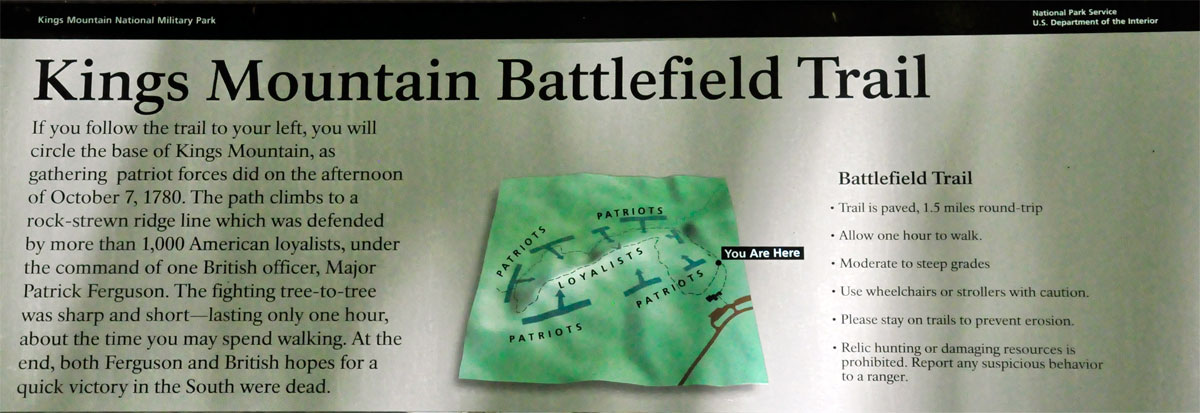 |
Did you know Kings Mountain National Military Park is NOT a Civil War park? Did you know that most battles/skirmishes of the Revolutionary War took place in South Carolina? If not, then welcome to Kings Mountain National Military Park, the turning point of the Revolutionary War in the South, where on October 7, 1780, an hour-long battle changed the course of the Revolutionary War.
Above quote from https://www.nps.gov/kimo/planyourvisit/index.htm |
 Kings Mountain is a unique battle for several reasons. It was one of the few major battles of the war fought entirely between Americans: no British troops served here. In the South, many people were divided. When the war started, some fought for independence, others for loyalty to England. Kings Mountain is a unique battle for several reasons. It was one of the few major battles of the war fought entirely between Americans: no British troops served here. In the South, many people were divided. When the war started, some fought for independence, others for loyalty to England.
Kings Mountain is also unique in that large numbers of riflemen fought here. Rifles were not used much by the armies. A rifle was a hunting weapon, used by families on the frontier. The American militia that fought here mainly used rifles; the Loyalist troops had mostly muskets.
The difference between a rifle and a musket is speed versus accuracy. A rifle is slow to load, but very accurate. Riflemen can hit a target at 200 or 300 yards. Yet the rifle can only be fired once a minute. A musket, with a smooth bore, is easy to load but inaccurate. Muskets have an accurate range of about 100 yards, but can be fired up to three times a minute.
Above quote from https://www.nps.gov/kimo/moreintroinfo.htm |
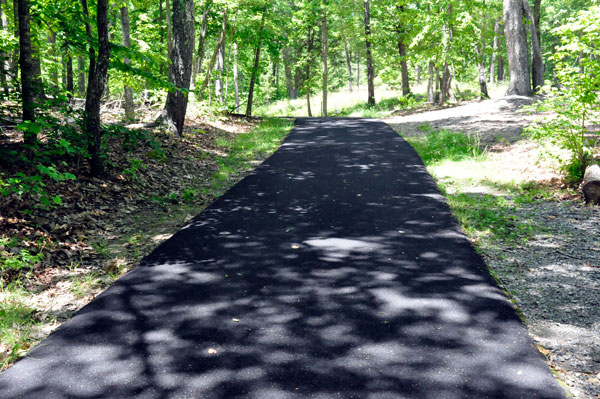 |
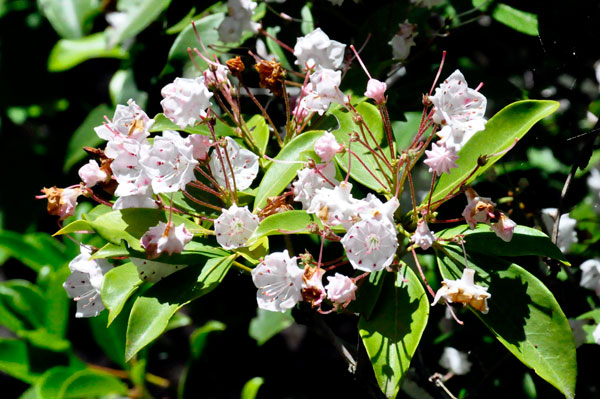 |
 |
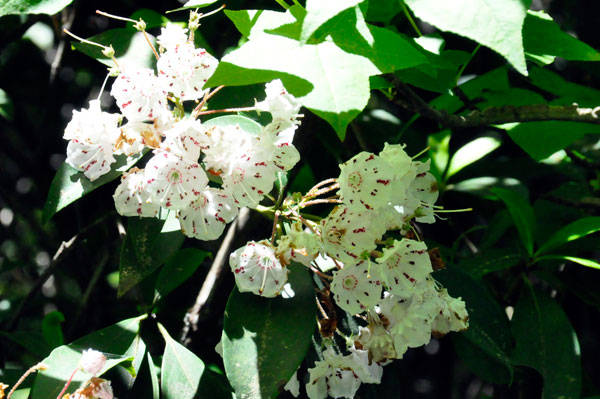 |
Below: A neat shadow of an army person
in battle. |
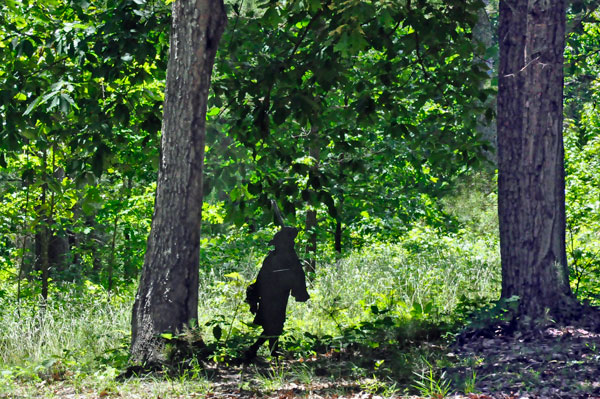 |
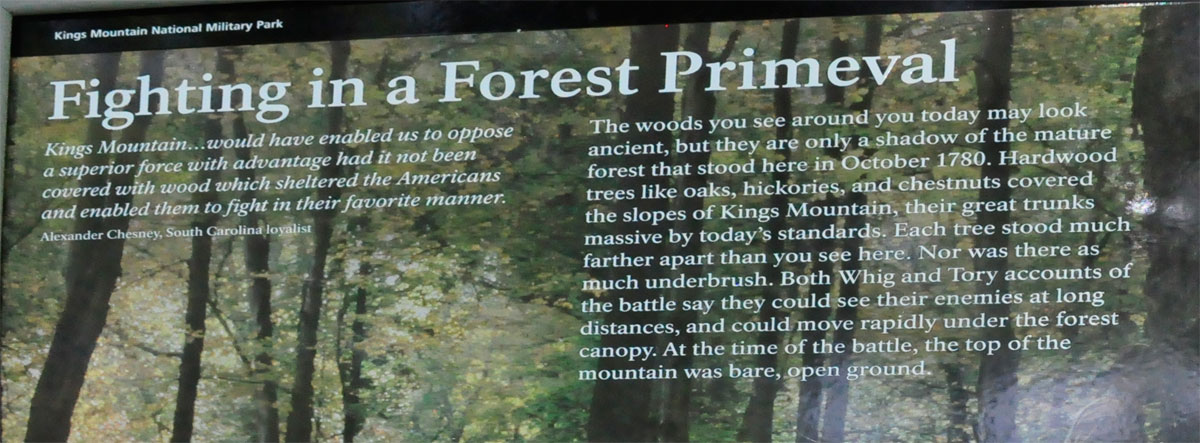 |
Below: An old Colonial Road trail |
|
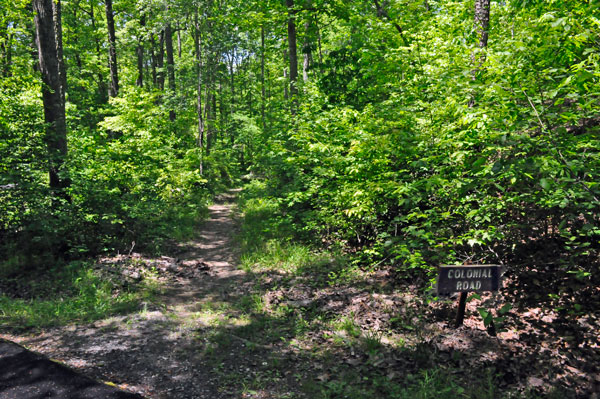 |
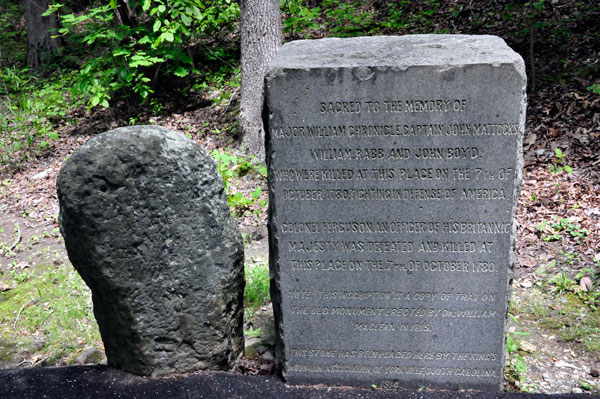 |
Below: A very steep path, up and down, with a rock monument at the top. However, neither one of the two RV Gypsies were able to walk up and down the extremely steep path to get a good look at the rock monument. |
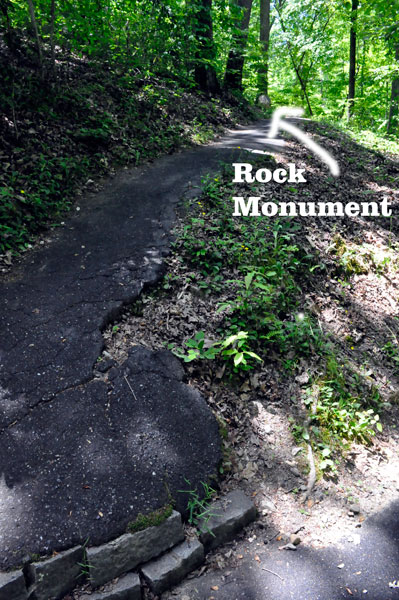 |
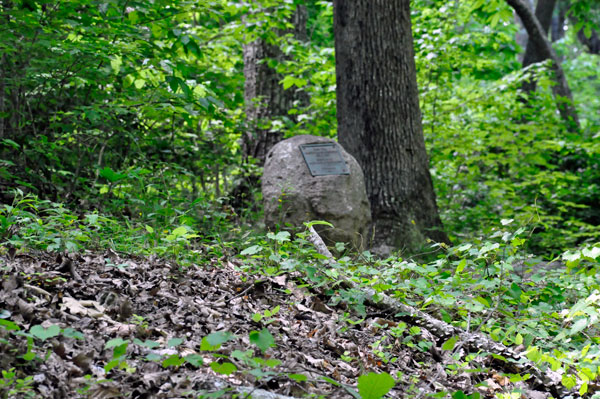 |
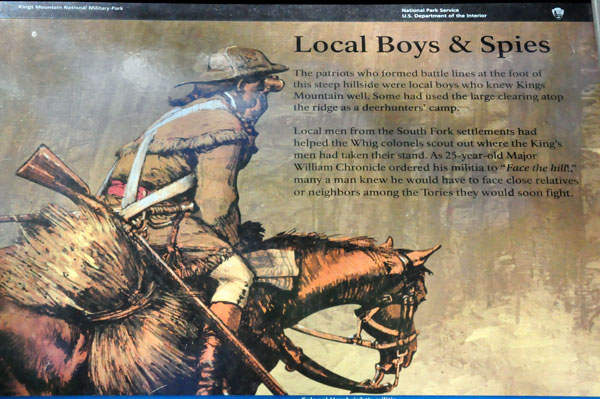 |
 |
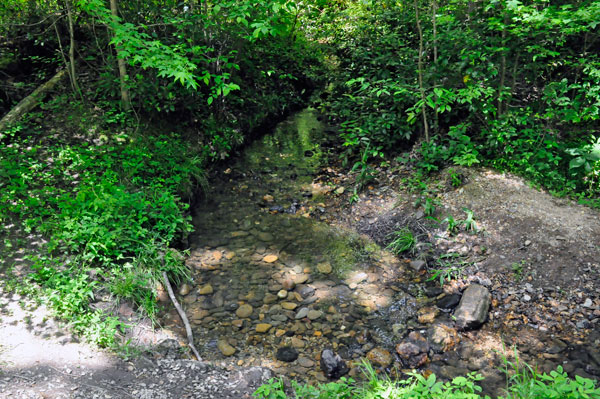 |
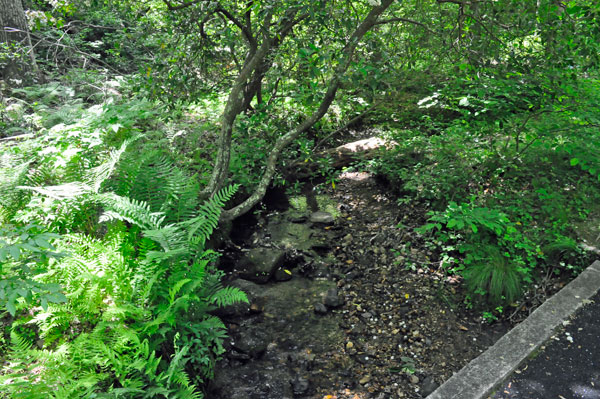 |
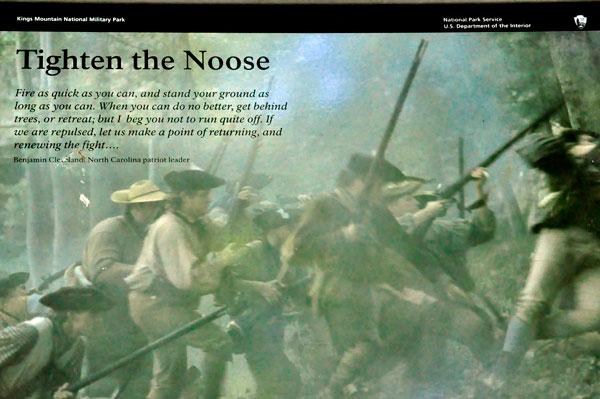 |
 |
Below: Each sign along the way had a Cell Phone Audio Tour option. The two RV Gypsies noticed that most people did not stop to read signs. |
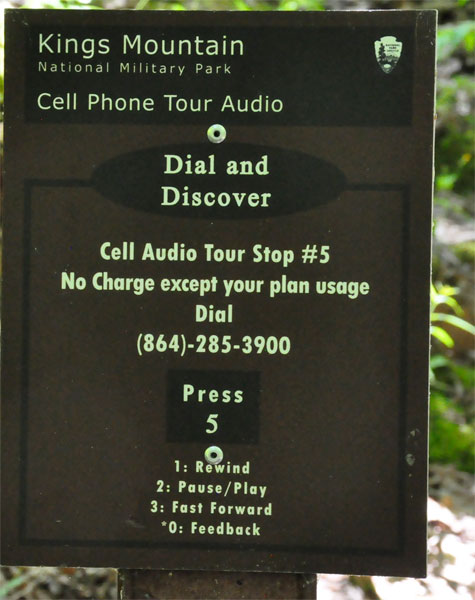 |
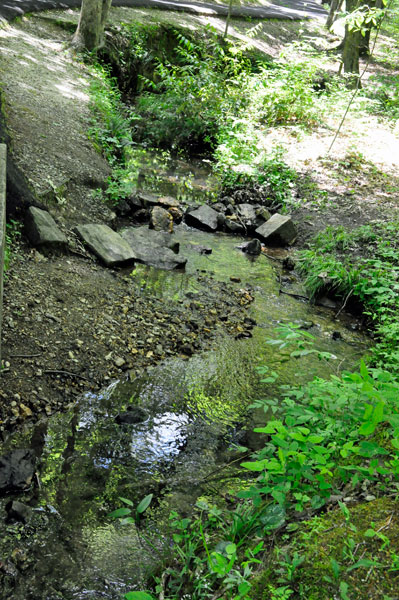 |
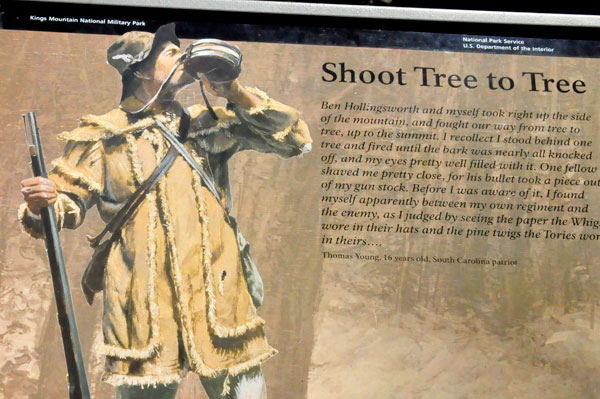 |
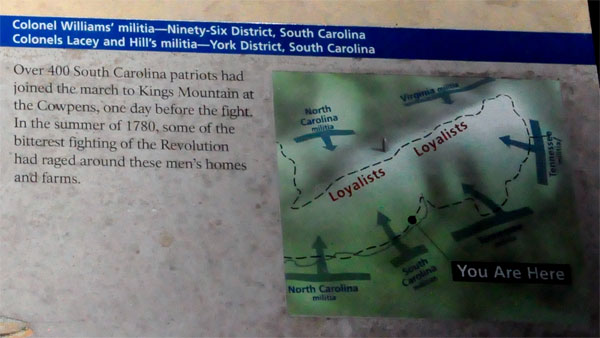 |
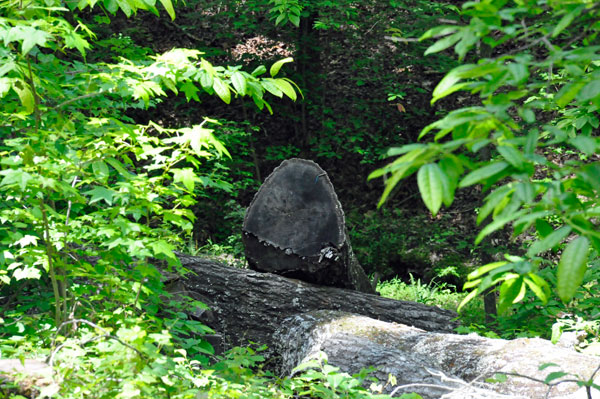 |
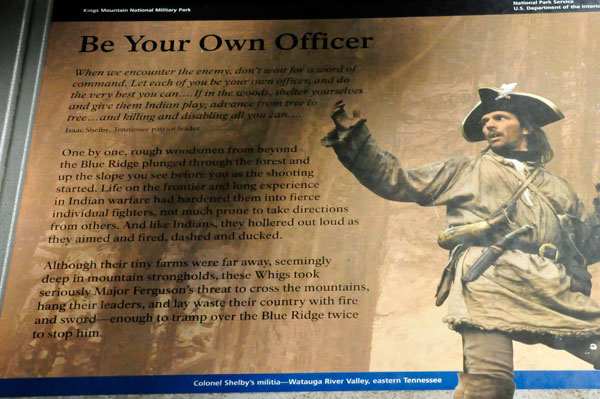 |
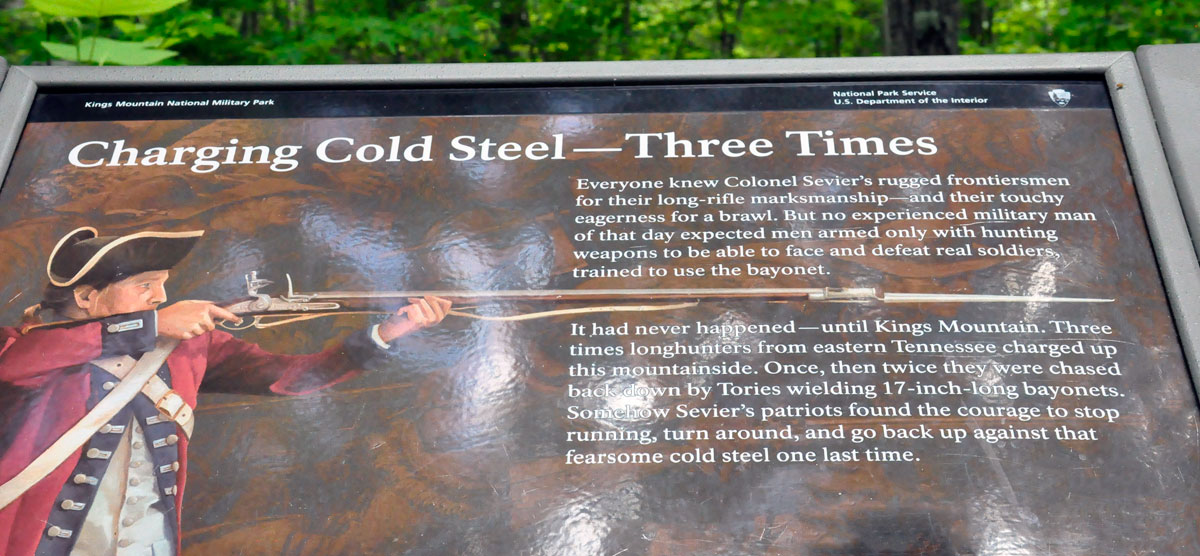 |
|
Below: The two RV Gypsies wandered on a short side path when they saw a sign for the Hoover Monument. They found this to be an extremely interesting monument. The sign in the photo below shows 70,000 people crowded together to hear the President speak. There were no trees in the area, no paved path, no easy way to get to this spot like there is today. |
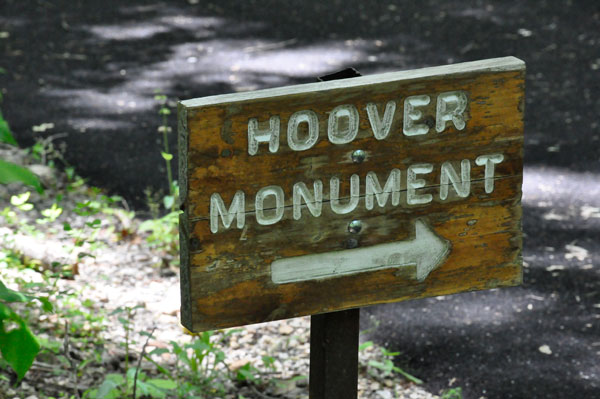 |
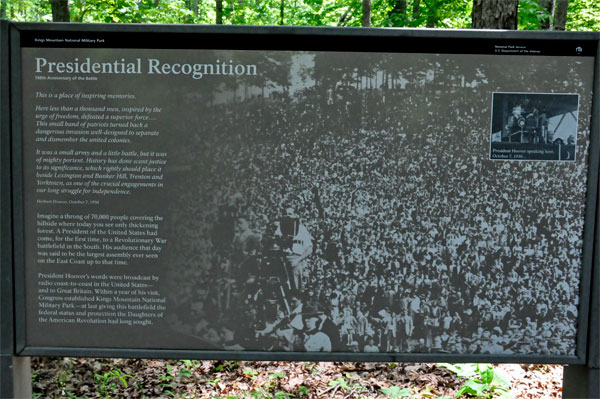 |
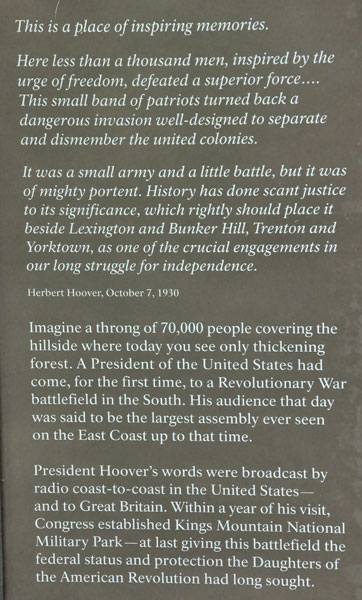 |
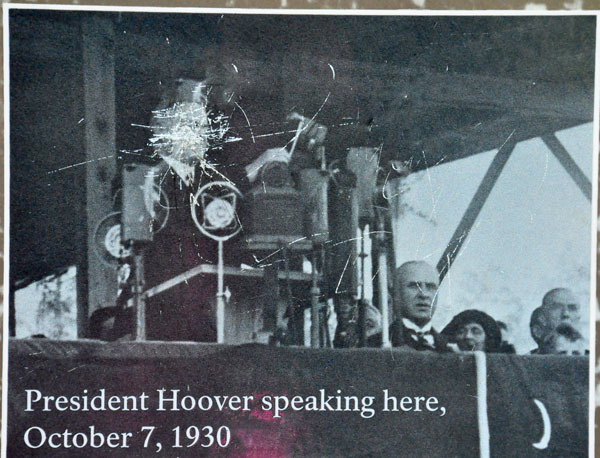 |
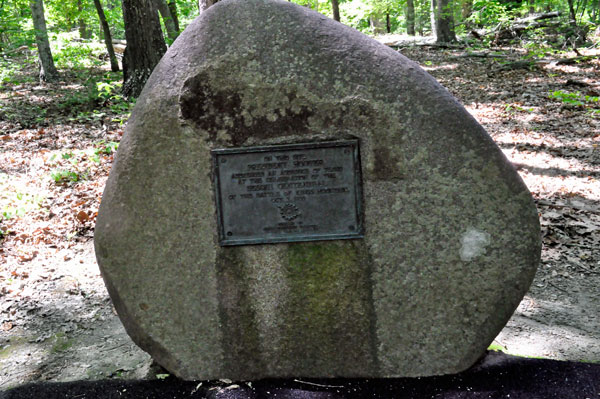 |
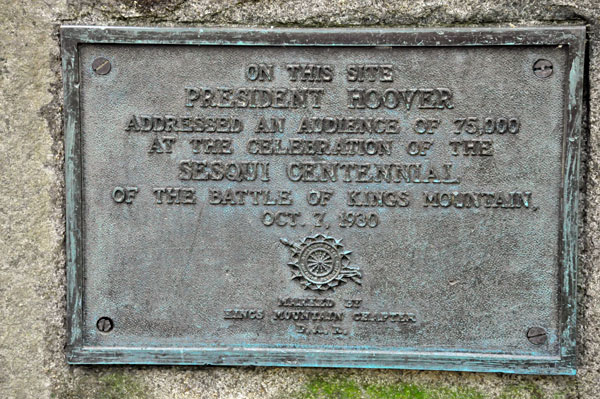 |
|
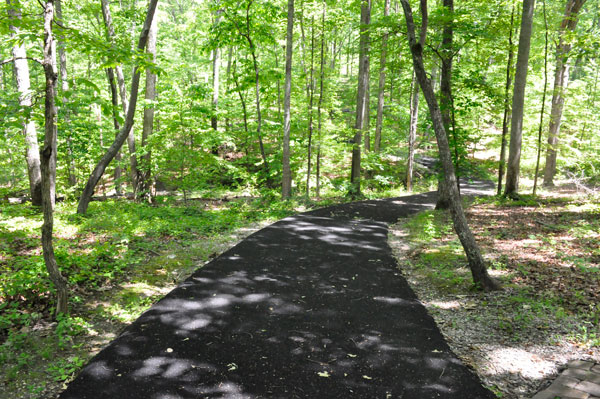 |
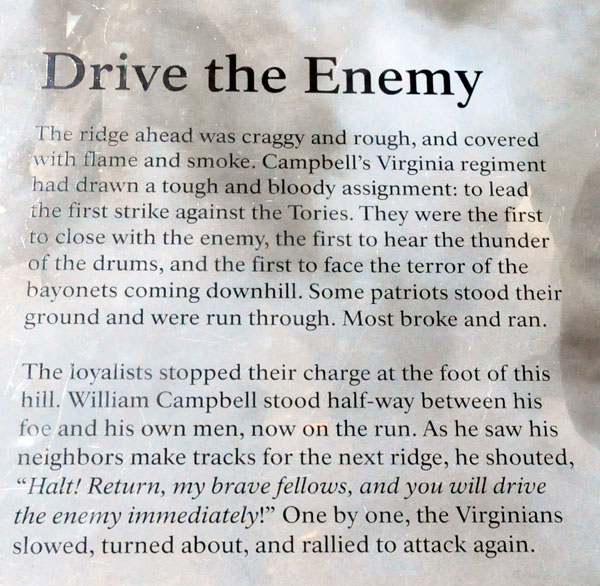 |
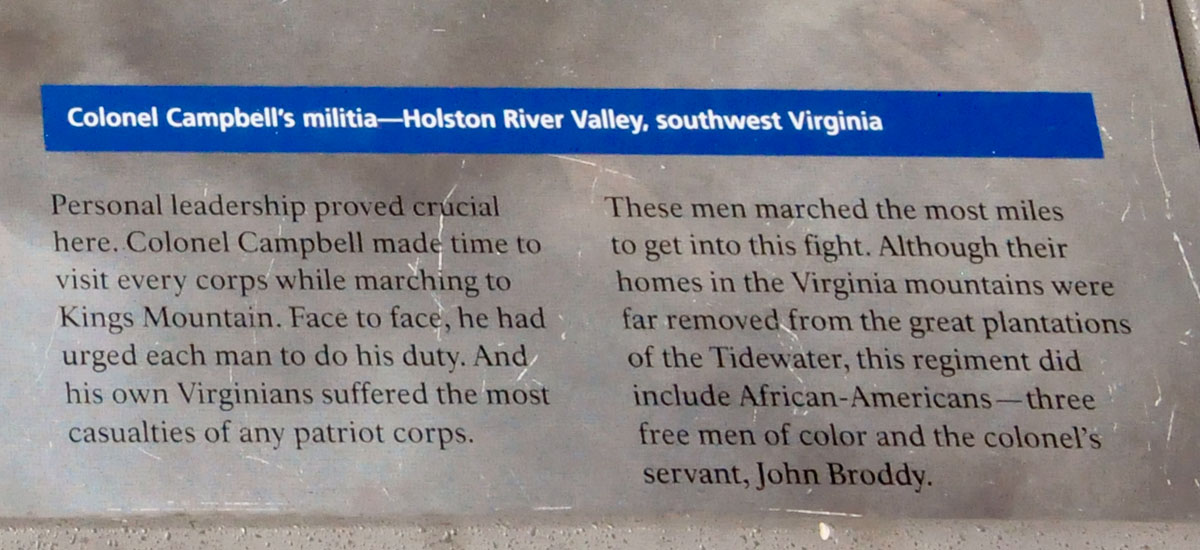 |
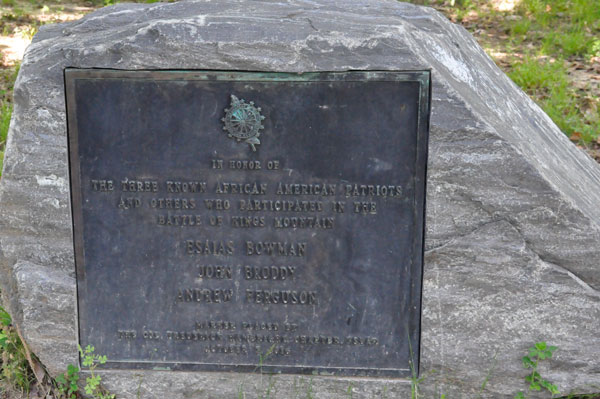 |
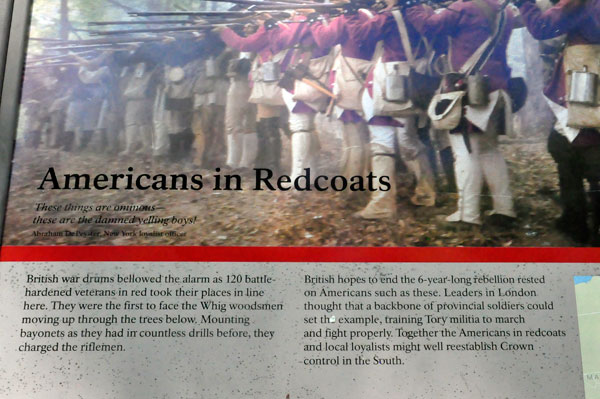 |
 |
 Below: Old Monument of Kings Mountain Battlefield, this 28-foot high, four-sided granite pylon was erected on October 7, 1880 to celebrate the centennial of the battle of Kings Mountain. Derived from ancient Egyptian architecture, the truncated and tapering pylon originally flanked the entrance to temples, but was reintroduced during the nineteenth-century Egyptian revival. The pylon rests atop five graduating steps comprised of granite blocks. Above the base, the shaft of the monument can be divided into three sections with the middle containing four embedded Vermont marble slabs with inscriptions. The entire shaft tapers to the flat capstone with a slight cornice. The ornamentation was intended to be a bronze figure of a Revolutionary War soldier in frontier gear and loading a rifle, but funds for the project ran out and this was never completed by future generations. Below: Old Monument of Kings Mountain Battlefield, this 28-foot high, four-sided granite pylon was erected on October 7, 1880 to celebrate the centennial of the battle of Kings Mountain. Derived from ancient Egyptian architecture, the truncated and tapering pylon originally flanked the entrance to temples, but was reintroduced during the nineteenth-century Egyptian revival. The pylon rests atop five graduating steps comprised of granite blocks. Above the base, the shaft of the monument can be divided into three sections with the middle containing four embedded Vermont marble slabs with inscriptions. The entire shaft tapers to the flat capstone with a slight cornice. The ornamentation was intended to be a bronze figure of a Revolutionary War soldier in frontier gear and loading a rifle, but funds for the project ran out and this was never completed by future generations.
above quote from https://docsouth.unc.edu/commland/monument/361/ |
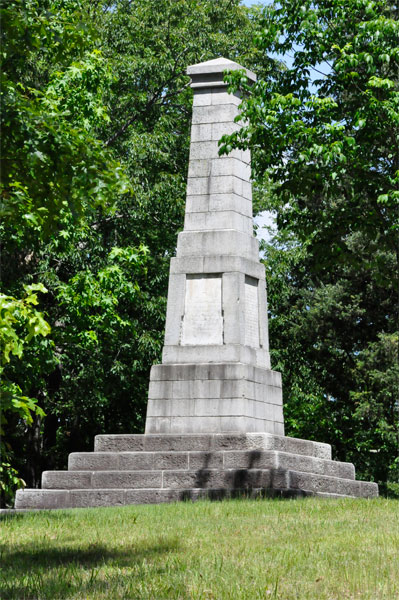 |
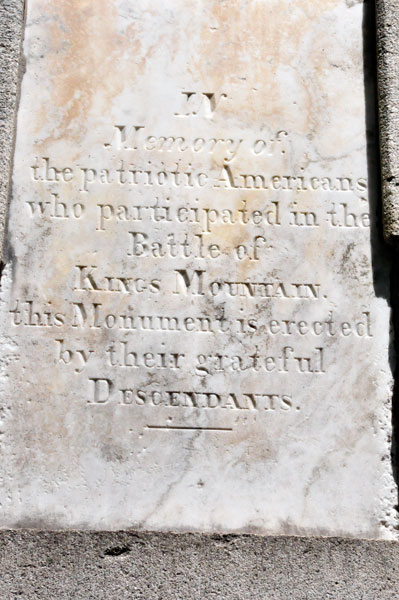 |
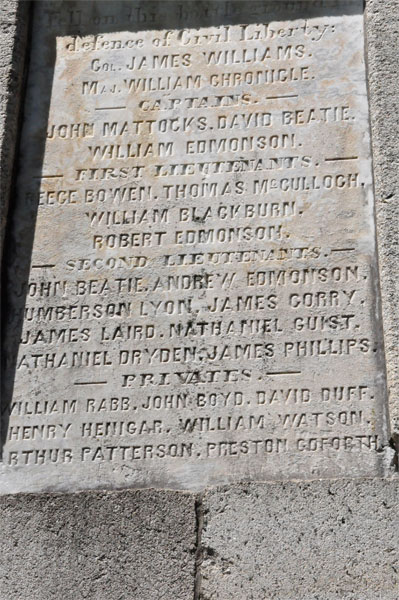 |
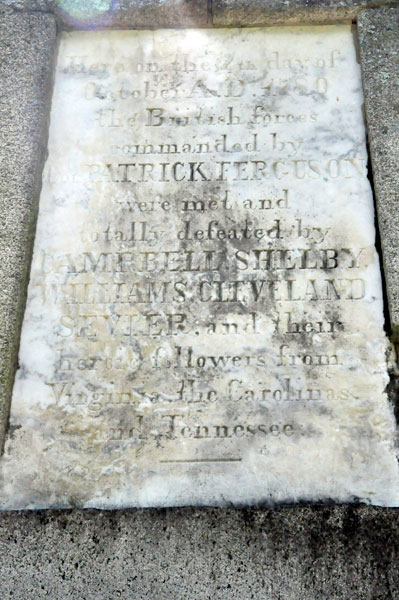 |
 |
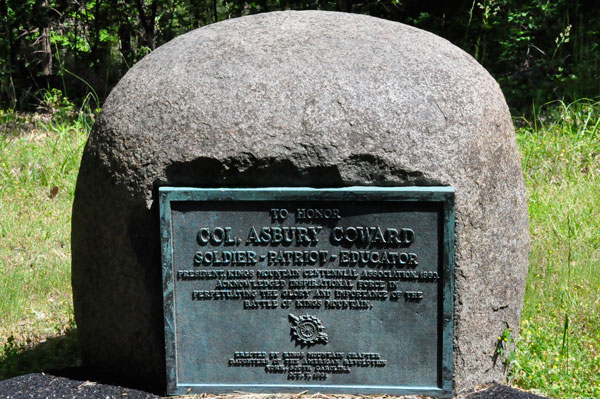 |
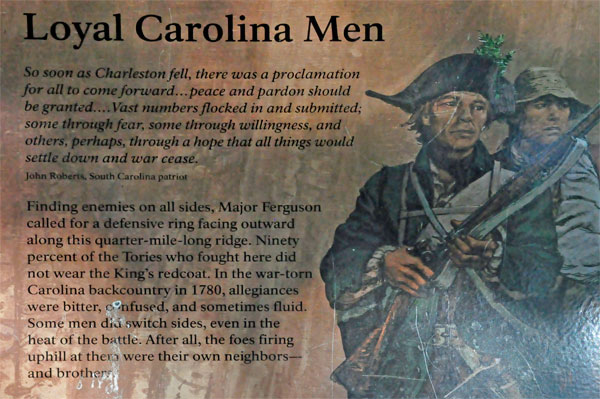 |
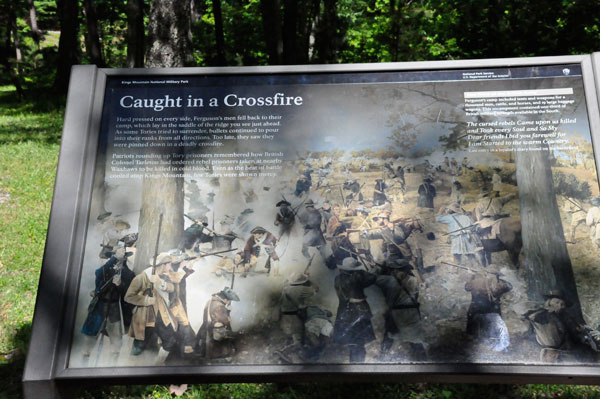 |
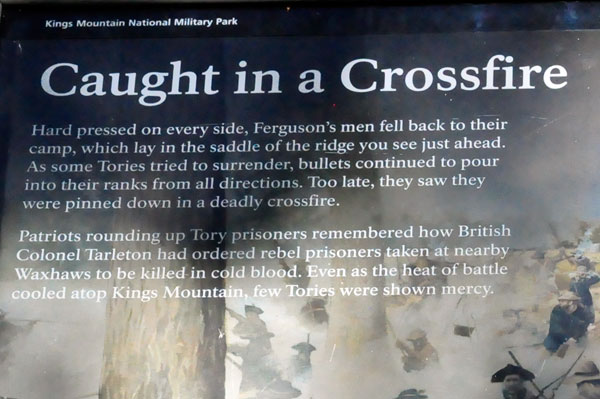 |
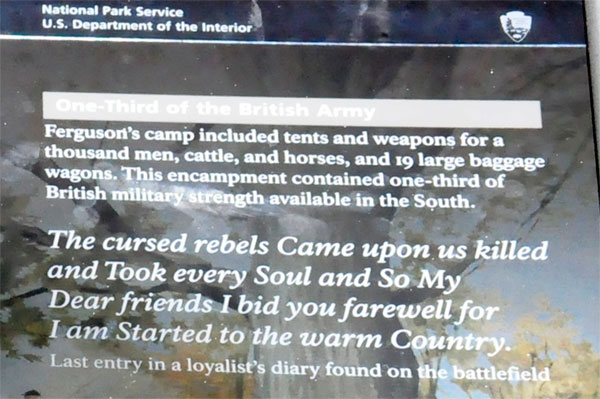 |
 |
Kings Mountain U.S. Monument, Kings Mountain National Military Park, Blacksburg (SC): Constructed of white granite from the Mount Airy quarry in North Carolina, the U.S. Monument towers 83 feet high above Battleground Ridge and rests on a two-stepped marble base (16’ x 3” squared). The interior of the obelisk is hollow, and the white marble bricks are contrasted against dark mortar. The diagonals of the obelisk roughly correspond to the four cardinals of the compass. And on each side of the monument are bronze tablets that dedicate the monument to the patriot victory at Kings Mountain, discuss the significance of the battle, list the American and British commanders, and list the Americans killed in battle.
Bas-relief, or low-relief, sculpture flanks each of the tablets. On the north and south sides of the obelisk are sculptures of two seated women in profile wearing flowing Greco-Roman dress. The figure on the right grasps a sword and a laurel wreath, symbols of martyrdom and victory. On the left, the female figure holds a palm frond, a symbol of peace, in her right hand while her left rests on her shoulder, exposing her breast. The east and west sides of the monument portray sprigs of pine, representing immortality. Cost #25,000 |
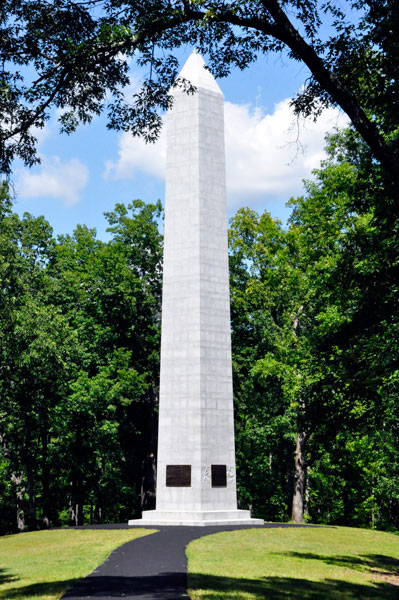 |
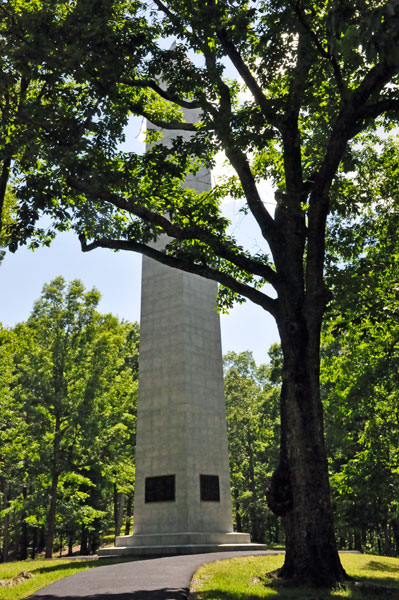 |
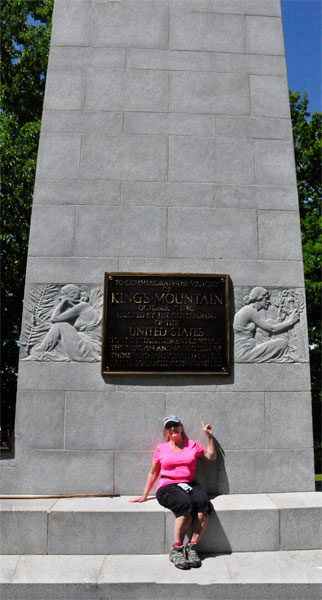 |
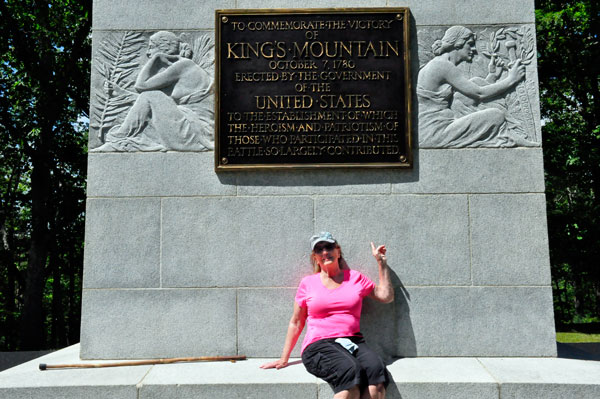 |
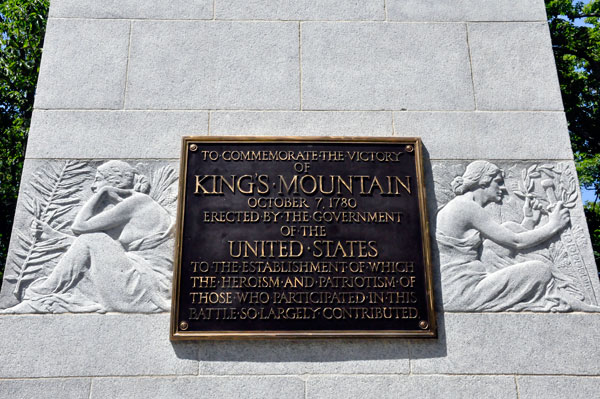 |
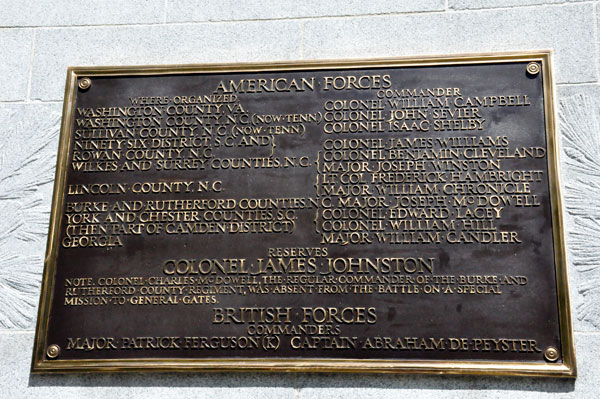 |
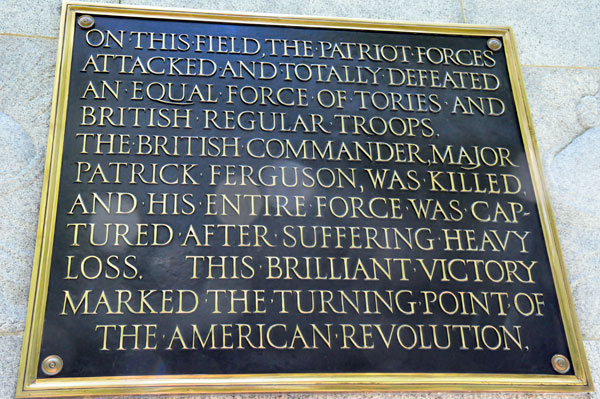 |
 |
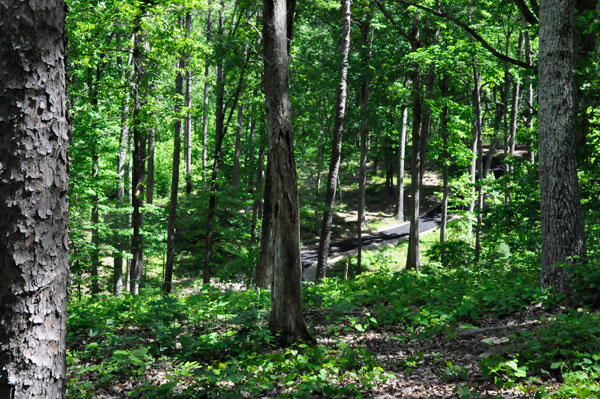 |
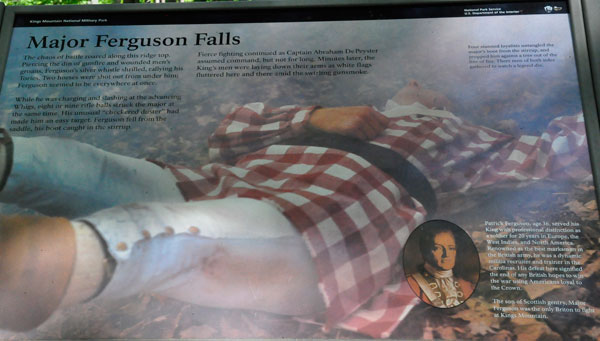 |
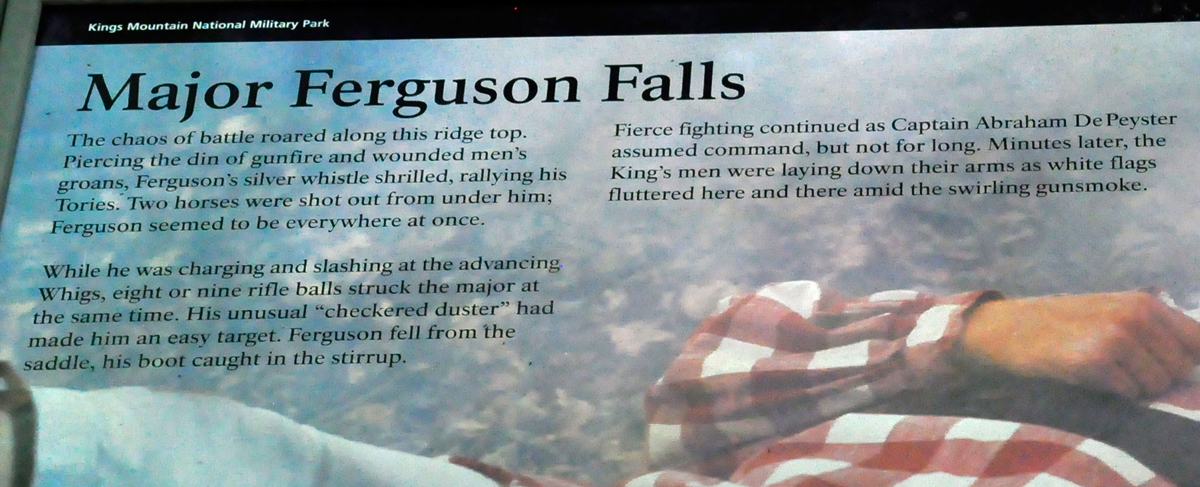 |
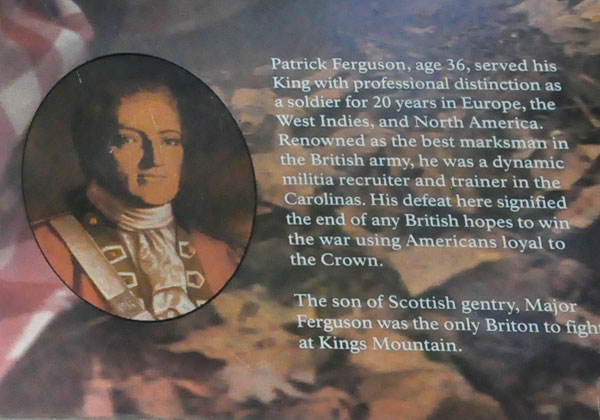 |
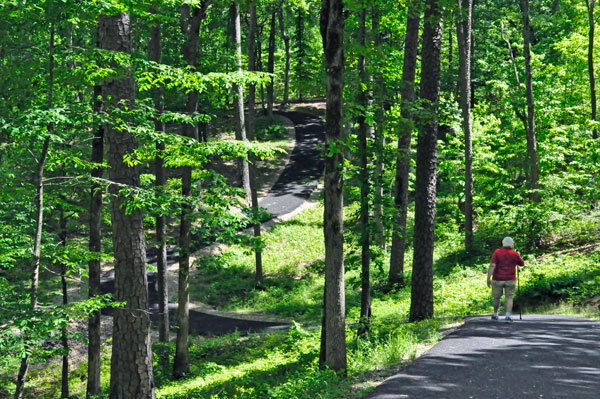 |
Below: Once again, the two RV Gypsies were just too tired to be able to walk down the hilly path to see the Hambright Marker up close. But Karen Duquette has a good camera and gets the best photo she can without getting real close up. |
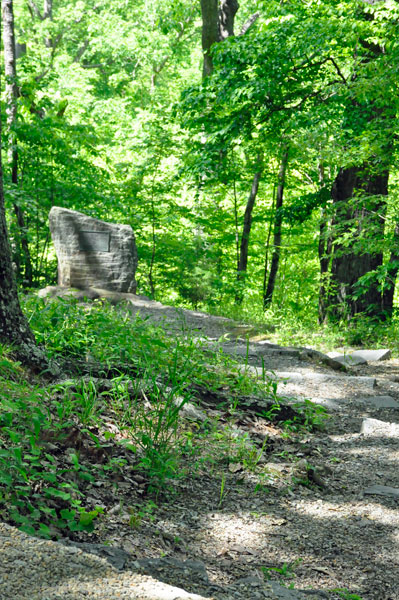 |
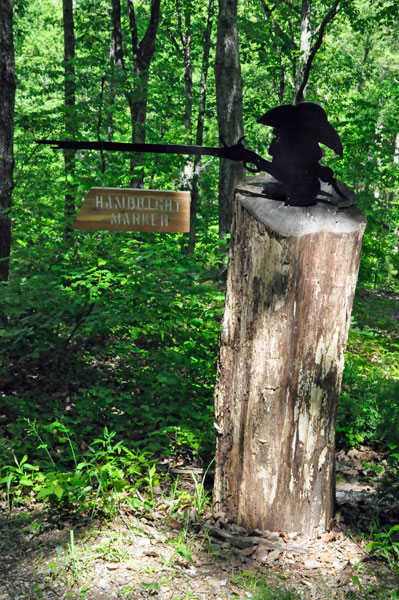 |
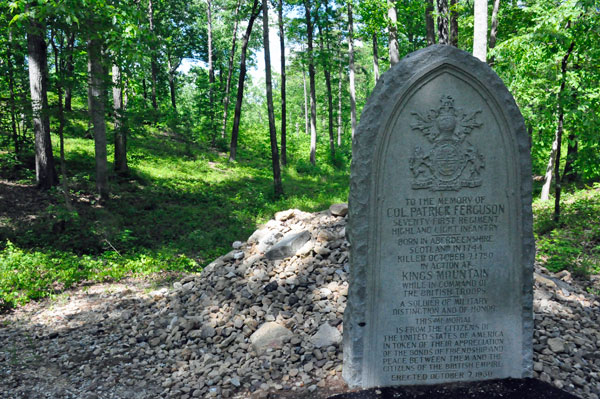 |
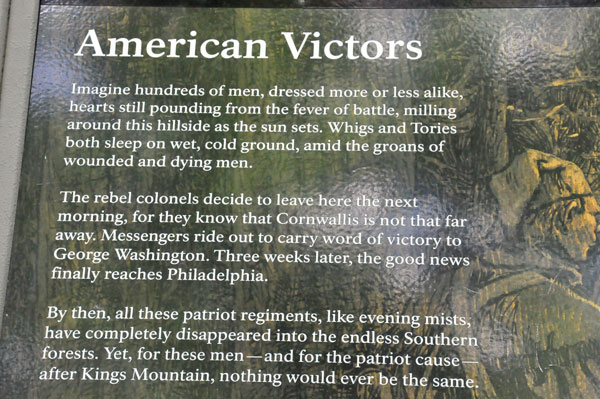 |
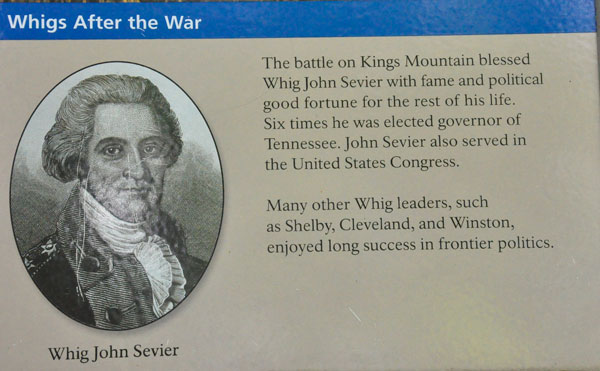 |
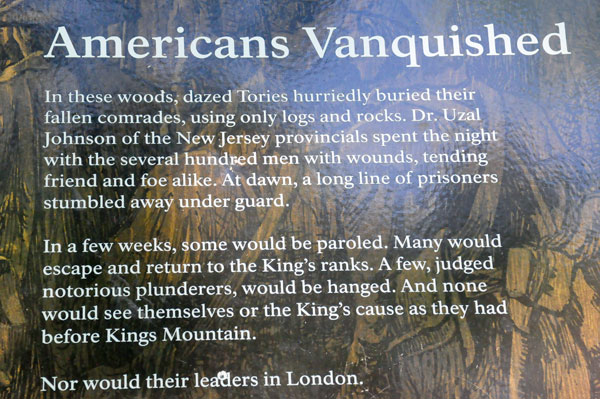 |
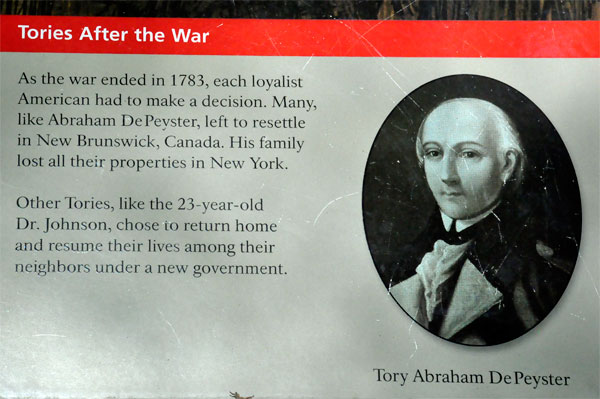 |
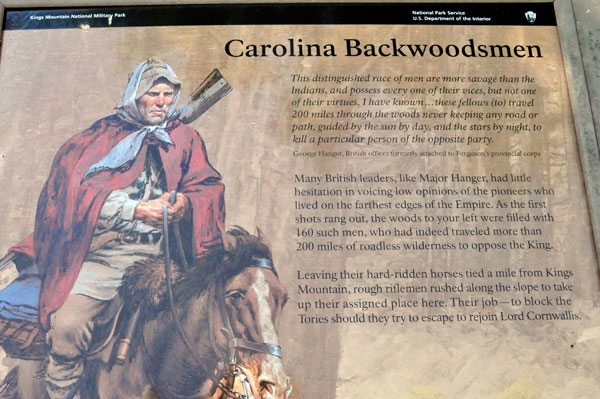 |
 |
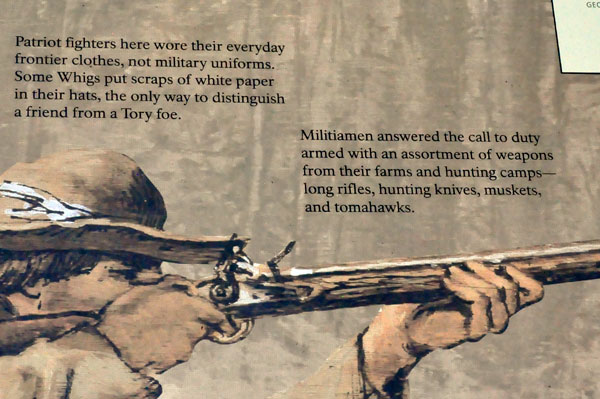 |
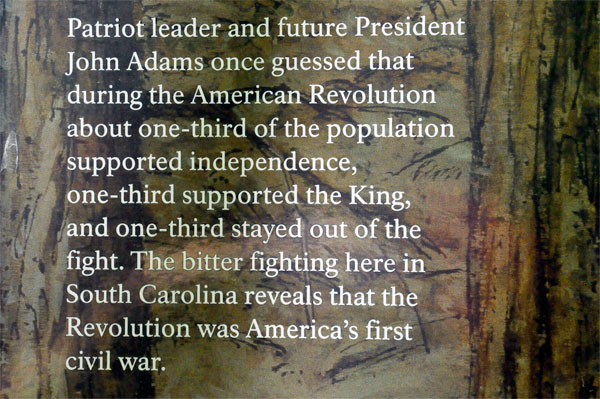 |
